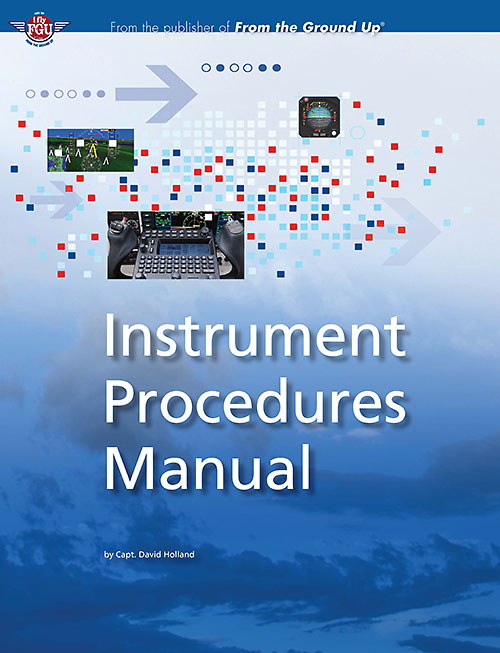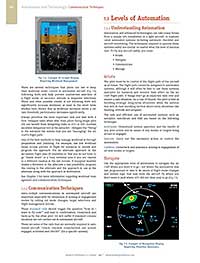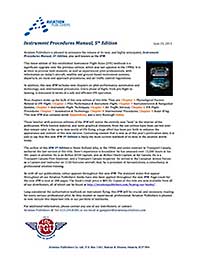 The New Instrument Procedures Manual (IPM) 6th edition has been fully updated and expanded in 2021 with the latest information and technologies. It is based on the Canadian regulatory and airspace system which is similar to the ICAO standard. The author of the new edition, David Holland, is the President of Aerosolutions and the author of the past two editions of the IPM. He has experience flying IFR throughout the world including northern Canada and oceanic airspace.
The New Instrument Procedures Manual (IPM) 6th edition has been fully updated and expanded in 2021 with the latest information and technologies. It is based on the Canadian regulatory and airspace system which is similar to the ICAO standard. The author of the new edition, David Holland, is the President of Aerosolutions and the author of the past two editions of the IPM. He has experience flying IFR throughout the world including northern Canada and oceanic airspace.
The IPM is a valuable reference for professional pilots, managers, regulators, student IFR pilots and ATC. It is especially valuable for check pilots and instructors who need very accurate knowledge to pass on to their candidates and students.
As the author, Aerosolutions has been approved by the publisher, Aviation Publishers Ltd to offer the IPM at the discount price of $75. Please fill out the form in the sidebar (or the bottom of this page if on a mobile device) to purchase your copy of the IPM.
IPM Description
The IPM provides students and experienced pilots with information on today’s aircraft, satellite and ground-based instrument systems, departure, enroute and approach procedures, and air traffic control regulations. Every phase of flight, from pre-flight to landing, is discussed in terms of a safe and efficient IFR flight.
Chapter 1 Physiological Factors Related to Instrument Flight deals with the physiological effects and human factors encountered in instrument flying, including how to handle disorientation.
Chapter 2 Pilot Performance and Instrument Flight provides threat and error management techniques, as well as specific CRM skills, to assist pilots to keep IFR flying safe.
Chapter 3 Instrumentation and Navigation Systems reviews the nature and use of principal cockpit instruments, the major instrument systems on board, radio navigation systems and pilot operating techniques for this equipment.
Chapter 4 Instrument Flying Techniques details basic IFR flying from scan techniques to partial panel emergency procedures. It covers IFR radio procedures (RT) and some of the common errors in RT, as well as how to avoid them. This chapter also includes sections on flight planning and how to organize your cockpit for a safe IFR flight.
Chapter 5 Air Traffic Services outlines specific air traffic control procedures for IFR operation, from airspace through to the pilot controller interface. It also covers services provided by ATS, airspace, separation criteria and pilot-controller communications.
Chapter 6 IFR Flight Procedures deals with IFR flight rules and procedures from flight planning to the termination of the flight. IFR best practices and error management strategies are included.
Chapter 7 Automation and Technology introduces these topics with the goal of providing pilots some handy techniques to get the most from the automation and advanced technologies on their aircraft. This chapter also provides a section on pilot techniques for using GPS for IFR departure, enroute and arrivals.
Chapter 8 International Procedures is a brief overview of international IFR procedures as well as US differences from ICAO standards for pilots flying into the USA.
Chapter 9 Helicopter Instrument Flying outlines the theory and application of helicopter attitude instrument flying, including IFR departures and approaches (including Copter procedures). It covers IFR rules and procedures specific to rotary wing flying.
Appendices provide useful reference material for the IFR pilot including an index, definitions, acronyms, rules of thumb, preparing for the Instrument Flight Test, maintaining your instrument rating and useful references for IFR flying.
Click the images to see a sample page of the IPM or the IPM press release.

